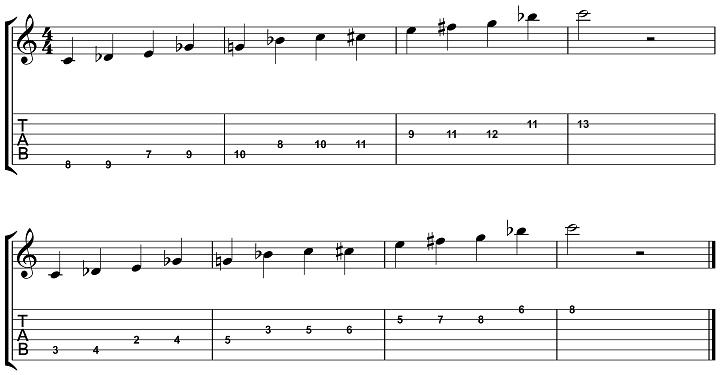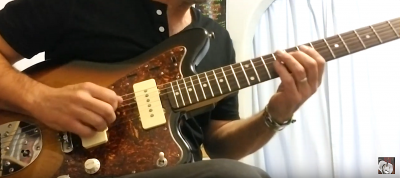What Is The Tritone Scale, Learn to build and play the tritone scale for guitar |
|
 |
Replies
(1 - 2)
|
|
|
|
| Jun 21 2013, 01:55 PM |
|
Wow! Never heard of this before.
Great tone set. I've used 'part' of it a lot: E F# G Bb G F# E (Db C) as an alt/dom run. Very McLaughlinesque. *I notated F# because it's easier for me to see it as a scale fragment that way. This post has been edited by klasaine: Jun 21 2013, 01:57 PM -------------------- - Ken Lasaine
https://soundcloud.com/klasaine2/foolin-the-clouds https://soundcloud.com/klasaine2/surfin-at-the-country-hop Soundcloud assorted ... https://soundcloud.com/klasaine3 New record ... http://www.cdbaby.com/cd/kenlasaine Solo Guitar ... https://www.youtube.com/playlist?list=PLXZh...5iIdO2tpgtj25Ke Stuff I'm on ... https://www.youtube.com/playlist?list=PLXZh...b-dhb-4B0KgRY-d |
|
|
||
1 User(s) are reading this topic (1 Guests and 0 Anonymous Users)
0 Members:




















